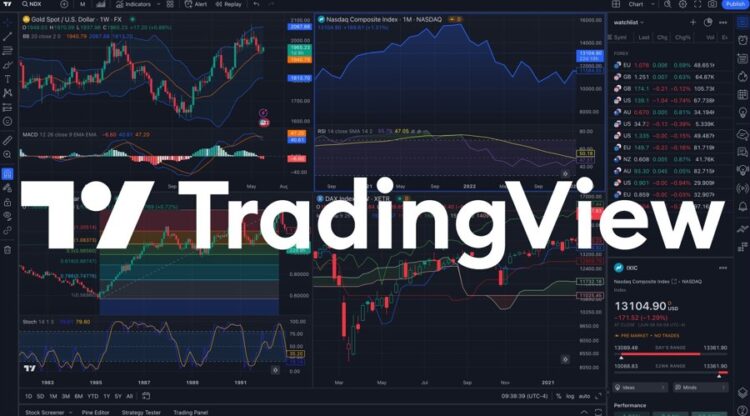Trend analysis hypothesis is imperative while assessing the stock market (eg, stock chart) for traders to make their predictions more accurate. By studying how prices move in relation to time, traders using TradingView Charts can form better trading strategies. The directional movement of prices, up, down or sideways, is critical in weighing investment decisions. Using the TradingView Charts displays another example of effective trading visual interfaces which support traders in their decision-making process since these tools provide numerous features for analyzing market trends.
Market trends require traders to define the trend pattern before conducting analysis for proper evaluation. The uptrending market pattern shows successive price increases that create higher price points and match those increases with higher market value areas. A downtrending market shows declining market interest because it develops decreasing price points that follow decreasing highs. The market is in a sideways trend when prices fluctuate within a fixed value range without showing a clear upward or downward movement. By identifying the type of trend occurring at a given moment, traders can base trading decisions on an informed assessment and position accordingly.
A trend analysis in TradingView Charts involves assessing the strength of a trend. Powerful trends have an enduring momentum, where prices steadily develop in one direction for an extended period. However, weak trends signify instability, and have a greater risk of being reversed. Traders use moving averages, which smooth price fluctuations, to determine the strength of a trend. For account holders, TradingView Charts offers many moving average indicators that help traders find the long-term direction of capital movement and use them to enter or screen the exit of their positions.
The successful execution of a trend analysis requires identifying when trends may reverse course. Market trends expire eventually as sentiment shifts throughout the market. Market trends reverse through specific formation patterns such as head and shoulders, double tops, and bottoms. Traders should examine traditional volumes on TradingView Charts to confirm the existence of these formations. During periods where price action combines with a distinct volume increase, traders evaluate potential entry or exit signals with greater strength for direction shift.
Multi-timeframe analysis offers a broader view of the market by analyzing trends across different time frames. A trend visible on a daily chart may not show up on shorter timelines like hourly or even 15-minute charts. For example, an asset may have an uptrend on the weekly chart, and short-term retracements may be made by the hourly chart. With TradingView Charts, traders can analyze different time intervals at the same time, which assists in preventing misleading signals that lead to uninformed trading decisions.
Use trend lines in a similar way to how you would use a force of habit. Traders can anticipate potential price movements when the prices approach a trend line. If the price breaks above a resistance trend line, it may signal the beginning of a buying opportunity. Conversely, if the price breaks below a support trend line, it could indicate a selling opportunity. These real-time drawing tools in TradingView charts allow traders to quickly and easily draw and modify trend lines as the price moves.
Using technical indicators for a better trend analysis leads to more accurate market predictions. While the Relative Strength Index (RSI) indicates if an asset is overbought or oversold, The Moving Average Convergence Divergence (MACD) predicts trend momentum. By using trend analysis along with these indicators, traders can improve their entry and exit strategies. The charts offered by TradingView allow traders to overlay several indicators onto one canvas, enabling them to gain a deeper understanding of the interaction between various technical tools and how market trends react to them.
Keeping a trading journal helps traders document their trades, processes, and results, showcasing their skills in trend analysis and identifying areas for improvement. By documenting previous trades, traders can spot patterns in their decisions and enhance their ability to recognize trends. Creating an educational system by pairing a journal with TradingView Charts provides visual access to review your trades, successes, and mistakes.
Trend analysis is a complex skill that involves identifying market trends and spotting potential trend reversals, along with using advanced charting tools effectively. These powerful visual and analytical functionalities make TradingView Charts even more powerful to help a trader follow the markets with more accuracy. Using trend analysis enables traders to refine their market predictions and investment decisions.











